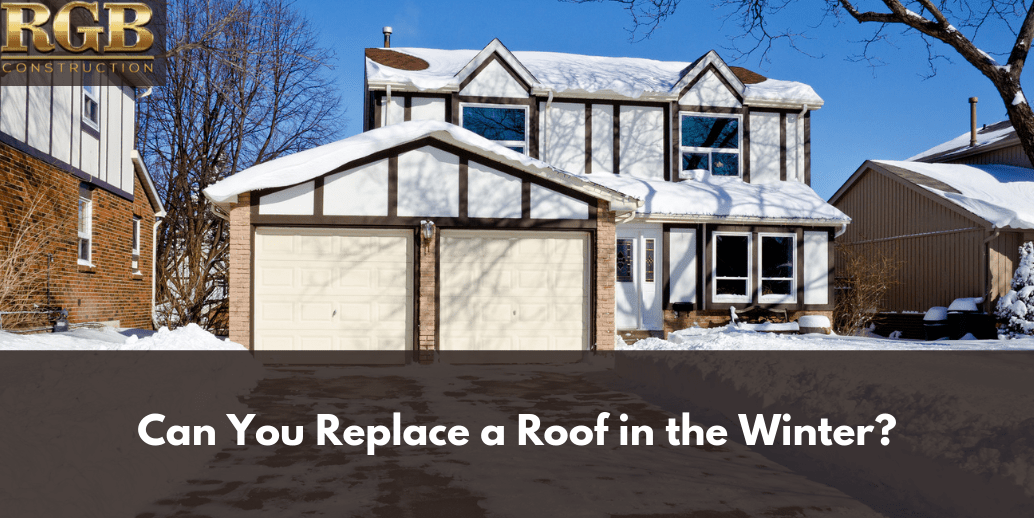Winter’s here again. While we like to associate this time of year with picturesque snowfalls, warm hearths, family togetherness, and that special holiday spirit, it also brings with it some logistical challenges when it comes to your home.
Winter is one of the roughest times on your roof, even if you live in a warmer or drier part of the country. Temperatures drop and winds puck up – things that add quite a bit of wear and tear to your shingles. If you live in a temperate or mountainous climate, it also means heavy snows and ice, which can do even more damage.
Sudden compromises to your roof’s integrity, mid-winter, sounds like a nightmare of epic proportions –you must have to cope with the damage as best you can, until spring rolls around. After all, it’s surely impossible to install a roof during winter, right? Well, the answer to that isn’t black and white. It really boils down to how bad the damage is – if it’s severe enough to warrant immediate action, it’s not impossible, merely difficult.
Best Conditions for Roof Installation
The best conditions for roof repair or installation are sunny, dry and relatively warm. Shingles are at their most pliable and workable in temperatures between 40 and 85 degrees Fahrenheit. Any colder, and they become brittle, which means they can break while being hammered or even when being handled.
While winter is the best time of the year to procure great deals on repairs or new roof installations, contractors will generally want to wait for a better seasonal climate to actually undertake the job.
The Problems of Winter Roof Replacement
As previously stated, when shingles become too cold, they can be brittle and fragile, wasting a lot of materials to get the job done. However, this isn’t the only problem. The adhesive intended to affix most modern shingles becomes less sticky in the winter. It’s the same concept as molasses or glue becoming thicker, slower and less pliable when they become cold.
Well, this may leave you thinking “why not choose a different material than asphalt shingles”. Unfortunately, this may alleviate part of the problem, but not all. Fiberglass shingles, shakes and ceramics/clay are susceptible to fractures in cold climates as well.
Well, How Can it Be Done?
Most roofing contractors, if faced with a winter roof replacement, do have measures they can take to make it possible. With asphalt shingles, they’ll generally store them in a warmer environment until they’re about to be installed. This keeps them pliable and their adhesive functional. Along with this, they may have equipment to properly apply the sealant (usually activated by sun heat), using UV lamps, hot air blowers or other work-arounds.
Winter Roof Maintenance
Regardless, winter is one of the times when roof maintenance is at its most important. Ice dams, snow buildup and the sheer brutality of the winds and cold environment can wreak havoc. Frequent inspections (done safely from a ladder) are always a good idea.
It’s also a good idea to minimize activity on the roof during this time of year. Sorry, Santa, but weight and movement on a cold roof can break sealant, shatter adhesives and crumble the shingles.
To learn more about winter roof maintenance, repair and replacement, fill out our contact form or call us today!







